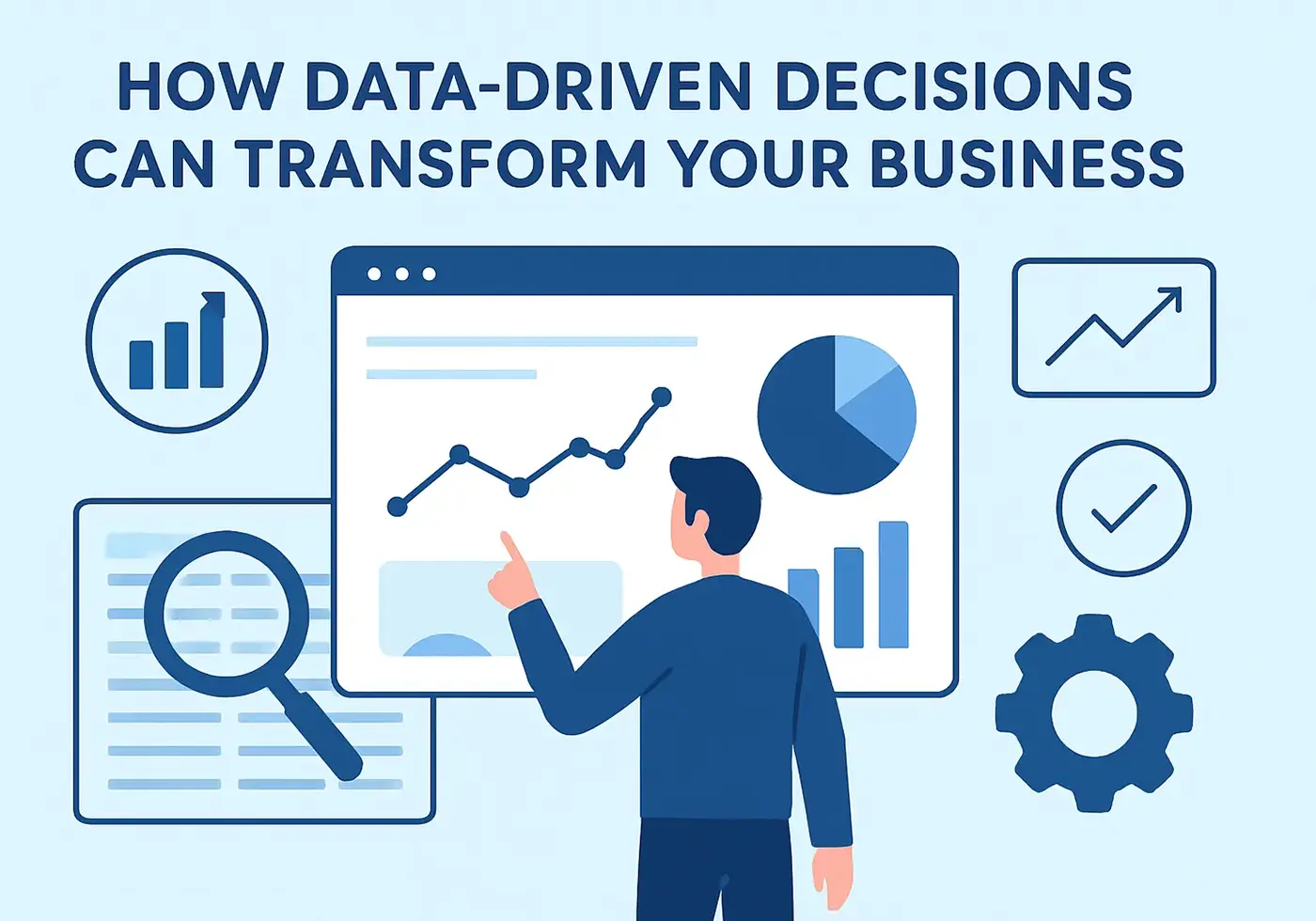Skip to content
How Data-Driven Decisions Can Transform Your Business
Back to blog
How Data-Driven Decisions Can Transform Your Business

1. Introduction
- Hook: Start with a striking stat—like PwC finding that highly data-driven businesses are three times more likely to make better decisions
- Introduce the central theme: shifting from gut-based to data-fueled decisions
- Thesis overview: highlight how data-driven decisions empower strategic clarity, operational efficiency, and lasting competitive advantage
2. Understanding Data-Driven Decision-Making
- Define DDDM: using metrics, insights, and evidence—not intuition—to guide strategy
- Sketch the end-to-end process: goal setting, data collection, analysis, actionable insights, and evaluation
3. Why It Matters: Key Benefits
- Improved Accuracy & Efficiency: Replace guesswork with validated insights; better alignment with business goals
- Competitive Edge & Agility: Faster market responsiveness and trend anticipation
- Enhanced Customer Experience: Personalization via deep behavioral insights—leading to retention and engagement
- Cost Savings & Better Resource Allocation: Minimize waste and optimize investments
4. Real-World Examples
- Amazon: Recommendation engine shaping purchase behavior and strategy
- Google (Project Oxygen): Data revealed the real impact of effective managers on performance
- Walmart during Hurricane Frances: Data-driven inventory decisions during crisis improved outcomes
5. Implementation Steps
Step-by-step guide inspired by best practices:
- Define clear goals and KPIs
- Identify data sources and collect relevant datasets
- Clean, structure, and integrate data
- Analyze using tools or BI platforms
- Translate insights into action
- Monitor outcomes and refine
6. Common Pitfalls & How to Avoid Them
- Poor Data Quality: Inaccurate or siloed data can mislead decisions
- Bias & Over reliance on Past Trends: Confirmation bias and historical inertia limit innovation
- Cultural Resistance: Without data literacy and buy-in, adoption falters
- Under utilizing Dark Data: Untapped unstructured data is a wasted opportunity
7. Fostering a Data-Driven Culture
- Embrace data literacy across teams; make analytics tools accessible
- Advocate for governance, transparency, and iterative learning
- Leadership must champion and model data-informed choices
8. Conclusion
- Reinforce the transformative power of data when integrated thoughtfully
- Encourage incremental adoption—start small, build impact, scale
- Close with a call to action: “Empower decisions with data. Transform your business
